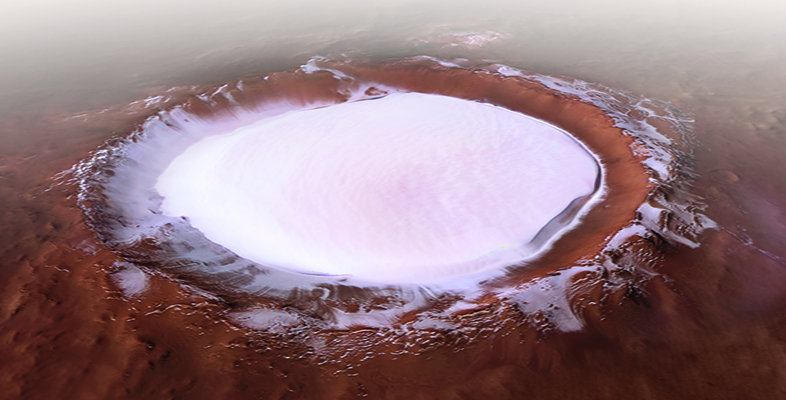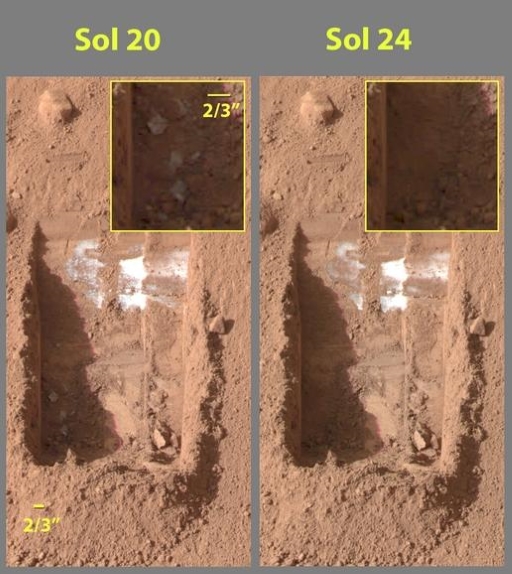4.8 Phoenix Lander – a better look at the polar region
You will recall that the poles were one of the first places suggested to have evidence of water, and several orbiter missions have confirmed this. Yet, until the Phoenix mission landed in the martian north polar region in 2008, these areas had not been investigated by ground-based spacecraft.
Phoenix was specifically designed to look for water and determine whether habitable areas might exist. When its robotic arm dug a trench into the soil, it found dice-sized clumps of bright material that vaporised over four days (Figure 44). Using its on-board instruments, this was confirmed as being water ice. Phoenix also observed water frost early on a morning, which disappeared as the Sun rose.
Phoenix also made two particularly important discoveries. Firstly, it confirmed the presence of perchlorate (ClO4−), which can act as an antifreeze (i.e., it can lower the freezing point of water), potentially allowing liquid water to exist. Secondly, it observed snow falling – the first time this was seen on Mars.

